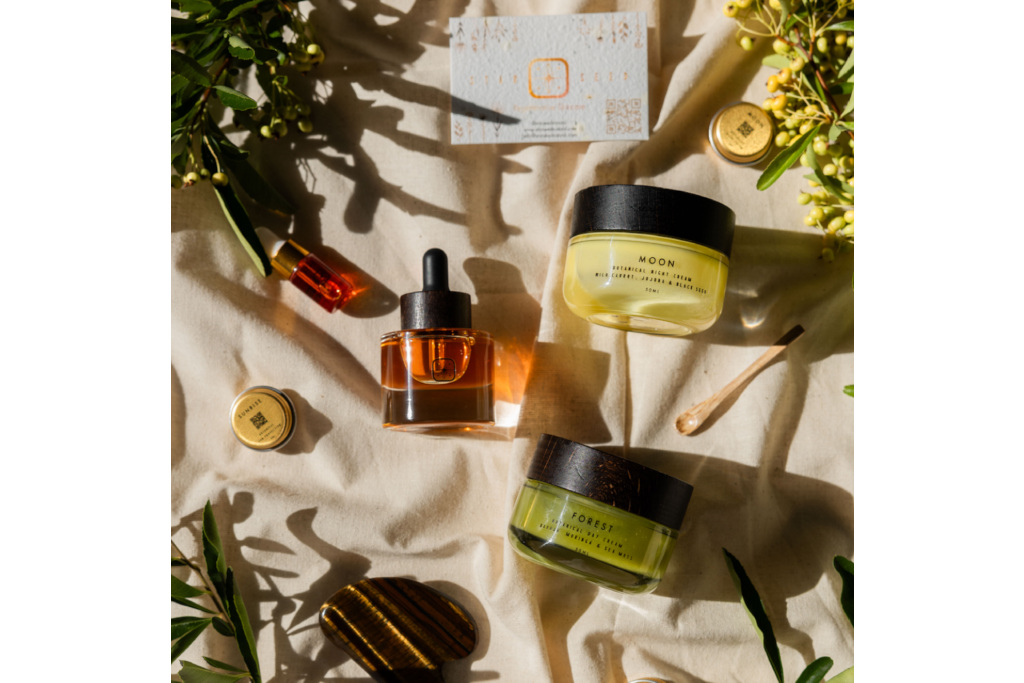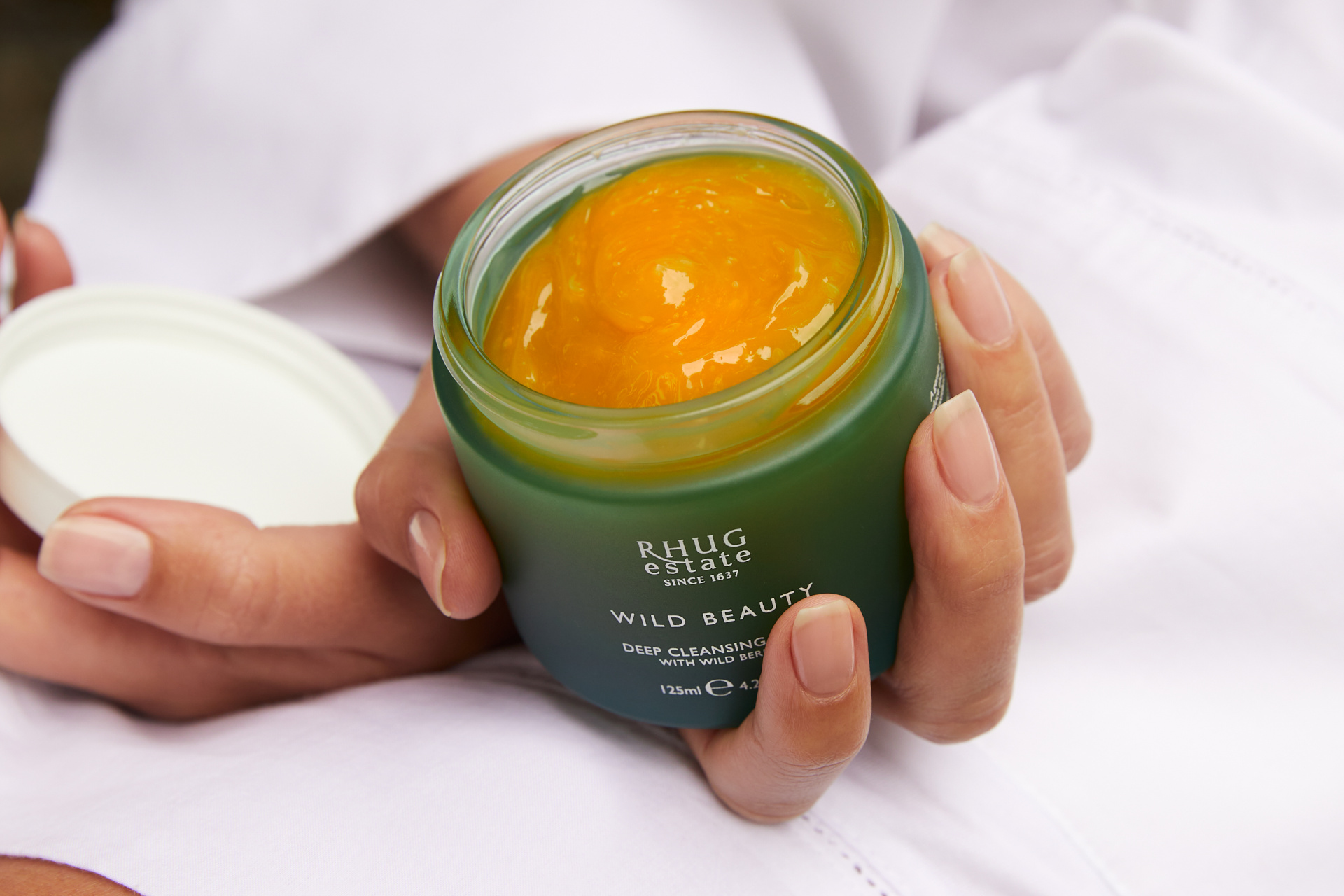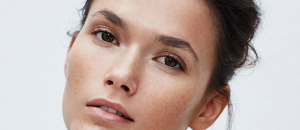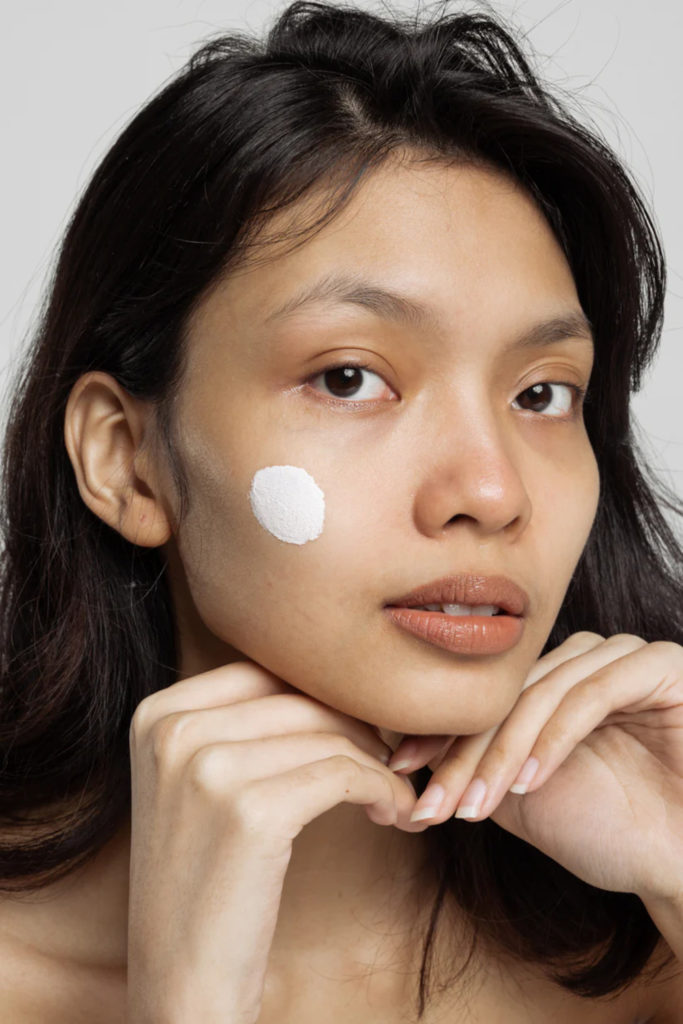What Is Regenerative Beauty?
By
1 year ago
From farm to face

The beauty industry is a minefield – especially when it comes to finding products that do good for your skin and the planet. The solution? Regenerative beauty, if you ask skincare label Star Seed. We sat down with the brand’s founders to find out just what this beauty buzzword means – and how brands are putting it into practice already.
The Country & Town House Responsible Buyers’ Guide
What Is Regenerative Beauty?
Building on the concept of regenerative agriculture, regenerative beauty refers to brands that source their ingredients mainly through suppliers who support regenerative farming practices and biodynamic farming. ‘The essence of regeneration lies in reconnecting with ourselves, community and nature,’ say Ed Pycraft and Emilie Jaspers, co-founders of water-free botanical skincare brand Star Seed. ‘Regenerative beauty, for us, means a commitment to leaving the world more beautiful and biodiverse than we found it. We not only regenerate your skin, but also the Earth itself.
‘By re-wilding your skin microbiome with wild and regenerative botanicals, we promote healthy, radiant skin,’ they continue. ‘Simultaneously, our dedication extends to regenerating ecosystems and nurturing healthy soils in sourcing areas. To date, we have planted 3,000 plus indigenous and endangered trees and mangroves, which is also positively impacting over 240 community livelihoods and 12 local schools in Kilifi, Kenya.’

But Wait, What Exactly Is Regenerative Agriculture?
‘Regenerative agriculture is really about restoring the land to re-establish rich, biodiverse soils,’ explain Ed and Emilie. ‘The most obvious method is to shift from annual crops (grains and legumes) to perennial (shrubs and trees). This is encapsulated in syntropic agriculture, which is designed to incentivise the planting of trees with the end goal of creating productive food forests. Ultimately, a healthy soil web improves the bioavailability (vitamins and nutrients) of our foods and, therefore, human and planetary health. Once we start to see that we are all interconnected, regeneration makes so much sense. We are nature, and nature is us.’
‘Regenerative farming is an approach to agriculture that focuses on restoring and enhancing the health of the soil, biodiversity, and ecosystem as a whole. It goes beyond sustainable farming practices by actively working to regenerate and improve the natural resources used in agriculture,’ adds Lord Newborough, founder of Rhug Wild Beauty. ‘These practices aim to build and maintain healthy soil by minimising soil disturbance, using cover crops, and practicing crop rotation – with the goal to help increase organic matter content, improve soil structure and enhance water retention capacity.
‘Additionally, regenerative farming emphasises the use of natural fertilisers and biological pest control methods, reducing the reliance on synthetic chemicals,’ continues Lord Newborough. ‘It also promotes the integration of livestock into farming systems, as their grazing and manure contribute to soil fertility and nutrient cycling. By adopting regenerative farming practices, farmers can improve soil health, increase crop resilience to climate change, reduce erosion and nutrient runoff, and enhance biodiversity. This approach also has the potential to sequester carbon dioxide from the atmosphere, mitigating climate change.’

And What Are The Misconceptions Surrounding The Term?
‘A lot of people immediately think that regenerative beauty applies to skin regeneration,’ says Lord Newborough. ‘That was the case a couple of years ago, but the concept of regenerative beauty has completely evolved to refer to how a brand focuses on giving back to the soil and land after it has taken the ingredients for its products.’
‘Farming has become industrialised with lots of corporates, chemical inputs and financial motives – so I think the term will always be misunderstood so long as we see ourselves as separate from nature,’ add the Star Seed co-founders. ‘When we start to see that our microbiome is shared and a part of the soil microbiome, we will stop harming the planet and begin caring for it. We are all part of one big organism. The regenerative shift is happening, and it all starts in the mind. With great projects popping up across the globe, we now have an opportunity to change the collective narrative towards regeneration. It’s an exciting and precarious time.’
The Pros & Cons
The biggest benefit of regenerative beauty? Its slower pace. ‘Just like fast fashion has deceived us to believe we need 52 seasonal changes in our wardrobe a year, the beauty industry tells its customers to buy hundreds of different products every month to keep up with ever-changing trends,’ say Ed and Emilie. ‘What regenerative beauty offers is a simple, nature-based solution designed to last. Think slow fashion, but for the beauty industry. If we slow down for a second and think about what we truly need, and which products add true value to our lives, we’d buy less and buy better quality products.’
There’s also the undeniably positive impact this type of consumption would have on the planet (and, in turn, our skin). ‘Regeneration focuses on biodiversity and its importance for the planet’s resilience against climate change,’ they explain. ‘Land and soil regeneration follow natural cycles promoting indigenous species and plant diversification. Our skin and gut microbiome are losing biodiversity at a similar rate to that of our soil and the Earth. You’re essentially supporting brands and lifestyles that improve your biodiversity and regenerate the environment around you.’

‘There are numerous environmental advantages to embracing regenerative beauty practices, starting with how the system supports soil health, biodiversity, and ecosystem restoration,’ adds Lord Newborough. ‘These practices also contribute to combatting climate change by sequestering carbon in the soil and reducing greenhouse gas emissions.
‘Regenerative beauty practices take a comprehensive approach to sustainability, considering various aspects such as ingredient sourcing, packaging, waste reduction, and community engagement,’ he continues. ‘This holistic approach ensures that sustainability efforts extend beyond a single aspect of the brand’s operations.’
Lord Newborough also outlines how regenerative beauty brands will also tend to prioritise transparency and accountability: ‘They will more often than not provide detailed information about their sourcing practices, certifications, and environmental initiatives – empowering consumers to make informed choices and hold brands accountable for their sustainability claims.’

And while the Star Seed team don’t think there are any cons, per se, they highlight that regenerative thinking does come with a few challenges. ‘The task of educating the world about the benefits of moving away from fast fashion and beauty, towards conscious and regenerative living seems huge,’ they explain. ‘Also the very small-scale nature of regenerative brands makes reaching the market more of a challenge – consumers will have to pay a higher price point, but when every person in a value chain is paid a fair wage and the raw materials are of the finest organic quality, the end product will, by nature, be more luxurious and thereby need to be priced accordingly. As production of packaging materials like mushroom emballage and wildflower seed paper reach mass market scale, the prices will hopefully become more approachable.’
‘Regenerative skincare products may not be as widely available as conventional skincare products,’ Lord Newborough reiterates. ‘This can make it more challenging to find and access these products, especially in certain regions or countries. There is also a risk of greenwashing, where brands make false or exaggerated claims about their regenerative practices. It’s important to carefully evaluate brands and look for certifications or third-party verifications to ensure their claims are legitimate.’
What To Look Out For
We asked our experts to share what characteristics we can we look out for with beauty brands to determine whether they’re adopting regenerative practices (and spot any lurking greenwashing). The main thing they agreed on, however, was that brands that are truly regenerative will demonstrate a number of ethical practices, rather than just a few. ‘Greenwashing often occurs when a brand emphasises one sustainable aspect while neglecting other important areas,’ explains Lord Newborough. ‘Look for brands that demonstrate a holistic approach to sustainability, addressing multiple aspects such as sourcing, packaging, and community engagement.’
Here’s what they had to say:
Check Out The Website
‘Determining the authenticity of sustainability claims can be challenging,’ starts Lord Newborough. ‘To ensure accuracy, I recommend visiting the brand’s ‘sustainability section’ on their website and verifying if they can provide concrete evidence to support their claims. If the information appears generic, it is likely a case of greenwashing.’
Packaging
‘In beauty, we can start with looking at the packaging of a product,’ say Ed and Emilie. ‘Ask yourself: Are there a lot of single-use materials? Is there a lot of plastic in the packaging? And are the products refillable? In terms of regeneration, I would look at whether any aspects of the packaging are plantable or biodegradable – in other words, able to add benefits to the soil when composted.’
Giving Back
‘Then I’d look at how the brands are giving back,’ the co-founders tell us. ‘Are they supporting any community projects, or land regeneration charities? At what percentage do they give back – is it one percent, five percent or 10 percent? We all know that it is costly to run a business in this day and age and we all have to survive, but if we are fortunate enough to make profits, we should be able to share a bit of it with the rest of the world.’

Product & Ingredients
And now for the product itself. ‘Examining the product ingredients is also crucial,’ emphasises Lord Newborough. ‘Genuine regenerative beauty products contain high percentages of natural ingredients. If a product is filled with synthetic fragrances, for example, it is not beneficial for the environment. Currently, there are no regulations in place regarding the legal definition of regenerative, and this issue needs to be addressed. The Competition and Markets Authority is developing a new Green Claims Code to scrutinize sustainability claims made by brands.’
Traceability
A key part of recognises regenerative practices is being able to see exactly where all of the components of a product come from. ‘If the product does contain natural ingredients that come from plants, I would look at where they are sourced from,’ the Star Seed team advise. ‘Ask yourself what value chain has been established, and how ethical it is. Take palm oil as an example – even though you can get organic palm oil, the way it is mono-cultured as a crop and how biodiverse rainforest areas are cleared for its production cannot be called “sustainable” or “regenerative”, even if it is certified organic. Organic is a very good place to start, since it removes any harmful inputs from entering the soil. However, mono-cropping will still deplete the local biodiversity and therefore the resilience of that ecosystem. The principle of sustainability lies in the word – to sustain a system or practice. But what if our sustainability practices are not good enough? That is when we risk greenwashing.’
Circularity
Another thing to look out for is whether a brand implements circular beauty practices – although Ed and Emilie stress the importance of knowing the limits of circular set-ups. ‘Circularity looks at how we can incorporate the waste we create into our production chain in a closed loop, but often overlooks the issue of having created all this waste in the first place,’ they warn us. ‘Regeneration is the only practice that looks at how we can leave the world better than we found it, and regenerative businesses will look at how they can create products that do exactly that.’

Impact
And then there’s also the impact our shopping can have on the local communities sourcing our ingredients. ‘Smallholder farmers are the worst impacted by climate change,’ the Star Seed team tell us. ‘They’re at the forefront of floodings, drought and other climate disasters, and are often left out of the climate debate. It can be tempting to localise all our new solutions in the West, but we firmly believe that we should involve and enhance the farming communities in our climate solutions. We plant indigenous drought-resistant fruit trees in local schools in Kilifi, Kenya, as well as plant a biodiverse mix of indigenous and endangered trees and mangroves. Through community planting events, local families learn about the benefits of biodiversity and of keeping trees and mangroves alive, which in turn will keep these practices going for future generations.’
Accreditations
If in doubt, you can also check brands and products for any sustainability-led certifications, like B Corp, Positive Luxury and the Soil Association. ‘Accreditations are also helpful, and can help guide us in the right direction,’ Ed and Emilie agree. ‘But accrediting farmland can be prohibitively expensive for smallholder farmers in places like Sub-Saharan Africa. I’d first and foremost look at the transparency of the brand. We use certified organic and local ingredients where possible, with East African ingredients like baobab, black seed and shea either wild foraged by smallholders and tribal communities or grown using no chemicals.’
‘At Rhug Wild Beauty, we prioritise certifications such as COSMOS Organic, Cosmos Natural, by the Soil Association, Cruelty Free, Vegan, Halal, and Positive Luxury,’ adds Lord Newborough. ‘These certifications assure that our brand has achieved the highest standards possible. Additionally, it is important to check if the brand offsets its carbon emissions through reputable organisations like the World Land Trust.
‘It is common for genuine regenerative brands to seek certifications from recognised organisations to validate their claims. If a brand lacks certifications or third-party verifications, it may be worth investigating further.’

The Final Word
‘The concept of regenerative beauty goes beyond simply taking from the environment; it revolves around giving back even more,’ highlights Lord Newborough. ‘It is a collective responsibility for the entire beauty industry to strive towards this goal.
‘For those who prioritise environmental sustainability, regenerative beauty offers a chance to actively combat the effects of global warming in our tangible reality,’ he continues. ‘Our world faces an uncertain future unless we all take responsibility and consciously choose sustainable sourcing practices.’
‘Regenerative beauty has only just begun catching on, but there is a worldwide regeneration movement across many industries, where brands and businesses advocate for transparent and traceable value chains,’ finish Ed and Emilie. starseednatural.com
Images courtesy of Star Seed










